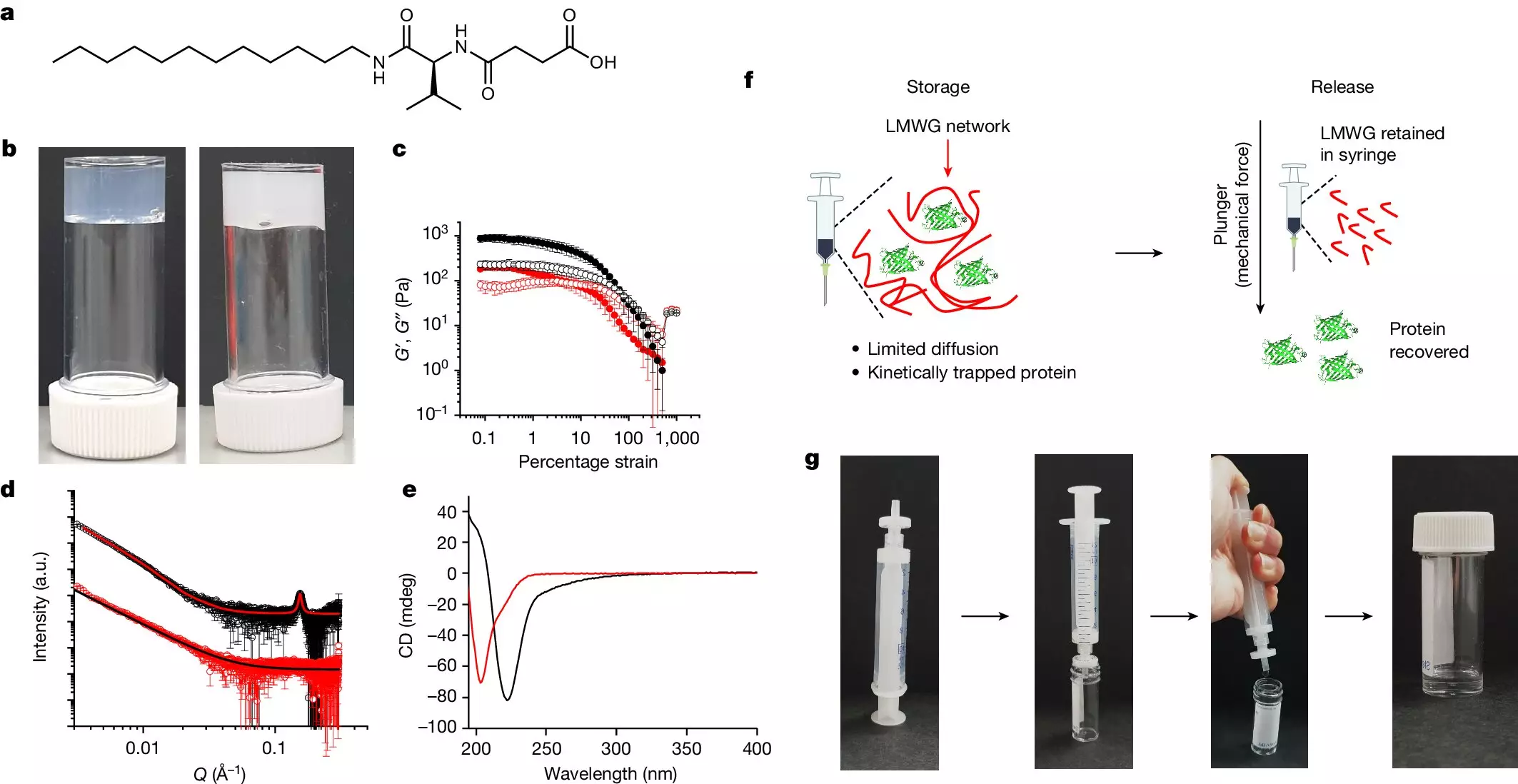Recent breakthroughs in protein therapeutics storage and distribution have the potential to reshape global health, particularly in under-resourced regions. The pivotal research, released in the esteemed journal Nature, underscores how a novel hydrogel could dismantle the longstanding reliance on refrigeration, significantly streamlining the delivery of vital medications. As we delve deeper into this innovation, the implications for both developing and developed nations become ever clearer.
The researchers hailing from the Universities of Manchester, Glasgow, and Warwick have developed a hydrogel primarily composed of water, which stabilizes proteins, allowing them to maintain their efficacy at temperatures soaring up to 50°C. This game-changing progression is not merely an academic exercise; it represents a robust solution to the logistical nightmare that has historically burdened the transport and storage of protein-based drugs such as insulin, cancer therapeutics, and emerging obesity treatments.
Addressing the Cold Chain Conundrum
For years, the medical community has grappled with the ‘cold chain’—a complex logistical network requiring refrigeration and precise handling to preserve the integrity of temperature-sensitive medications. The cold chain imposes immense challenges, especially in developing countries where reliable electricity and storage infrastructure are often inadequate. Consequently, patients in these regions frequently find themselves deprived of effective treatments due to the limitations imposed by these requirements.
The novel hydrogel design from the research team offers an enticing alternative, promising an accessible means to store critical medications without the burdensome necessities of refrigeration. Imagine a world where insulin, rather than being locked away in ice, can be delivered straight to a patient’s doorstep via standard mail service—opening avenues not just for improved medical accessibility, but also for reduced environmental impact due to energy savings.
The Science Behind the Hydrogel
Delving into the technicalities, the hydrogel is composed of low molecular weight gelators (LMWGs) that form a three-dimensional structure of rigid fibers. When therapeutic proteins are integrated into this hydrogel, they ensconce within the fiber matrix, effectively preventing the aggregation that diminishes their medicinal effectiveness over time. Such mechanical stabilization is groundbreaking; it means that the proteins are preserved in an environment that is not only stable but also conducive to easy extraction when needed.
This technology stands out because it sidesteps the common issues related to chemical additives often used to stabilize proteins in traditional storage solutions. The absence of these additives increases the safety profile of the therapies, ensuring that patients are administered purer substances.
Real World Applications and Testing
The team’s experimental approach was robust, exemplified by their testing with insulin and beta-galactosidase, an enzyme prominent in biotechnology applications. In rigorous tests, they subjected the hydrogel to extreme conditions—temperature spikes and mechanical agitation—normally lethal to traditional protein formulations. The outcome? Both insulin and beta-galactosidase maintained their functional integrity, showcasing retention rates of 97% efficiency and more after intense stress.
Further, in a particularly revealing logistics test, samples of proteins surrounded by the hydrogel were sent via standard postal service over a two-day period. Upon arrival at the destination, these proteins were just as potent as when they began their journey, emphasizing the hydrogel’s impressive resilience against the rigors of transport.
Broader Impacts on Health Inequity
As the healthcare landscape continues to evolve, this innovation harbors substantial implications for healthcare equity. The ability to deliver temperature-sensitive medications without the cumbersome tautness of refrigeration translates into better access for populations that have traditionally been marginalized in terms of health provisions. From combating chronic diseases to managing acute conditions, the successful deployment of this hydrogel technology could ensure that life-saving therapies reach those who need them most, irrespective of geographical or economic barriers.
Furthermore, this advancement bears significant potential for the pharmaceutical and diagnostics industries, as it can aid in rethinking supply chains that previously strained under inefficient temperature controls. It not only broadens the frontiers of therapeutic accessibility but also allows for a nimble response to health crises, which were palpably felt during the COVID-19 pandemic.
This groundbreaking hydrogel technology is not merely a scientific curiosity; it is a paradigm shift that signals a new era where access to vital medications could become universal, reducing the disparities in healthcare delivery across the globe. As research teams continue to explore and refine these technologies, we can only anticipate their vast possibilities for improving health outcomes on a global scale.


Leave a Reply